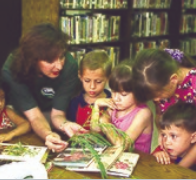As teachers we are often nervous about discussing current events with elementary school students. As a white teacher, I am especially nervous about discussing racial tension because I am afraid of making microaggressions or accidentally reinforcing stereotypes.
I have learned, though, that to not talk about race and current events is negligent to our students, their families and our society. Racism is real. Current events happen.
Too often, teachers in predominantly white schools don’t believe their kids need these conversations. Don’t be that teacher.

Here are some suggestions for how to talk about the Derek Chauvin trial, recent police violence and other current events topics.
• Know your “why” — why it matters to the students in front of you and why you are choosing to teach in the manner you are with the materials you have chosen.
• Think critically about how to start the conversation or learning experience. Practice words and phrases you might use, say them out loud and write them down.
• Recognize that each student and class is different; this requires you to know your students well enough to anticipate their needs and feelings, and to be able to suggest books that might speak to them better than you can.
• Educate yourself if you are unsure how to begin. Learning for Justice has excellent resources, and I recommend talking through lessons with colleagues or even practicing them together. A community approach increases confidence and comfort when talking about sensitive topics in young classrooms.
• Share your conversations with your students’ families. In my experience, parents appreciate getting ideas for talking with their kids about sensitive topics.
Here is an example from my fourth grade classroom, where I brought up and discussed the Chauvin trial and the recent shootings with my students after Daunte Wright was killed.
Throughout the year we have had conversations around current events during virtual instruction, in full-class settings and in many natural side conversations. No specific structure is required, nor should your class structure or setting be limiting factors.
I prepared by selecting supporting books that would allow us to talk about identity, history, children’s voices and white privilege.
Related: How do you teach antiracism to the youngest students?
I began the Daunte Wright discussion by asking my students to share what they knew before I mentioned his name or the event. This is necessary because, as a teacher, I don’t want to tell my students what to think; I want to support their inquiries into sensitive topics and provide them with opportunities to think critically. As they shared their awareness, it quickly became clear that the students in front of me needed a better understanding of white privilege in order to process the current events. This, in turn, opened the door to talking much more directly about the specifics of other shootings and the Chauvin trial.
My students were able to approach this case through a lens of historic and systemic racism, which led to reflection, further reading, questions and a greater awareness of themselves in the larger world. Although the facts of the case were a part of our ongoing classroom discussions, my students were able to focus less on the “what” and “how” of police violence and more on the “why” of these repeated acts in our country.

When we talk with our students about what is going on in the news, and how Black and brown members of our community are being hurt, we respect children’s intelligence, humanity and curiosity and the love they have for themselves and others.
I sent an email to caregivers after the class conversation. Importantly, my students talked with each other about how they can disrupt the cycle, which, according to parents, led to extended conversations at home as well.
Kids truly are able to talk about big ideas, sensitive topics and the hurt in the world. We can teach in a way that does not set the weight of the world on their small shoulders, yet honors their part in it.
When we talk with our students about what is going on in the news, and how Black and brown members of our community are being hurt, we respect children’s intelligence, humanity and curiosity and the love they have for themselves and others.
We have opportunity after opportunity to have talks like these. Let’s not avoid them, because by bringing the discussions into our classrooms we create opportunities to celebrate joy, justice and equality.
Jennifer Magee is a fourth grade teacher in Middleton, Wisconsin, and an 18-year teaching veteran. She holds a masters in Educational Leadership and Social Justice from the University of Wisconsin-Madison and is currently working toward her Ph.D. This commentary was distributed by the Hechinger Report, a nonprofit newsroom that reports on education.














